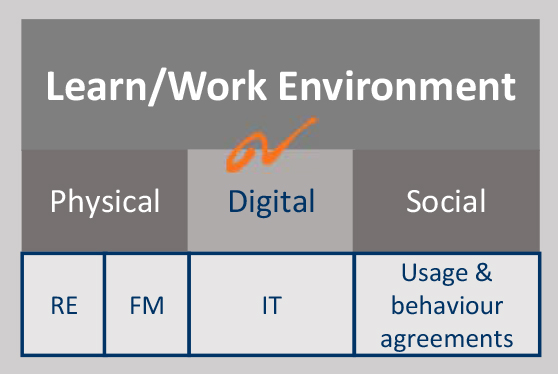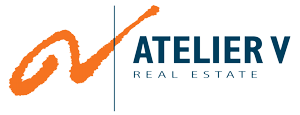
Solidified policy
The higher education landscape is changing. Over the last centuries, educational institutions have undergone substantial changes in learning theories and pedagogical approaches. From a place of instruction – transmission (19th century), via a place to produce learning – transactional (20th century) to a place to construct knowledge – transformational (21st century).
The new teaching and learning methods, the use of IT advancements, and new social expectations and behaviour have given students more freedom to decide What they are supposed to learn, When they want to learn, How they learn and With whom. Disrupting the delivery method in a profound way.
Change in education is much faster than the learn/work environment legacy can accommodate. This lack of spatial alignment may frustrate innovation.
The solutions of ‘yesterday’ no longer offer solace for today’s challenges. Not only is keeping pace with cutting-edge technological developments challenging but also the changing use of the physical environment. Many university buildings are from the last century and some are even older. They require refurbishment or replacement to meet evolving functional needs, technical maintenance and sustainability aims. Different parts of a building change at different rates to follow constantly changing user requirements. Not the initial architect but time is the main architect of our built environment.
Buildings are solidified policies from the past. When teaching and learning approaches evolve, a building is difficult to ‘liquify’ again to support the contemporary educational process. Regularly aligning accommodation strategy with the organisation’s policy makes timely anticipation possible.
The developments in educational theories, learning and information technology have resulted in new ways of (virtual) teaching and learning – anytime, anyhow, and anywhere. This is a game-changer and impacts the relationship between teacher/teaching, student/learning and the learn/work environment.
The existing challenge of aligning the learning environment with (new) learning activities will increase by the growing possibilities that students have to choose when, how, where and with whom they want to learn.
Learning takes increasingly place outside the traditional classroom (flipped classroom). Since we are social beings, physically meeting for group lectures, collaboratively assignments and face-to-face information transmission will always play an important part as well.

Students are supposed to gather 21st-century competencies and become creative self-directed learners, critical thinkers who take responsibility for their own learning process, learn how to build and use (digital) networks, communicate and cooperate with others, and use information technology to find and create appropriate information to master life and career skills. Students expect besides a functional and effective formal learning environment also attractive and appealing informal learning spaces. Knowledge development is a dynamic process in which periods of working with others alternate with concentration and need balancing.
While many educate still for mainly efficiency and performance, rather than creativity, independence and purposeful interdependence a growing number of educational institutions are changing. They emphasise besides Effectiveness and Efficiency of the learn/work environment also more and more student Engagement/experience in order to manage their reputation. Furthermore higher education has an increasing need for the valorisation of its research and teaching which results in a growing collaboration with commercial and non-commercial organisations and society in general.
To make well-informed decisions about the changing landscape of Higher Education, more insight and understanding of the alignment of the process of teaching and learning with the learn/work environment (physical, digital, social) in which it takes place is required. An accommodation roadmap and frequent monitoring of the implementation of policy plans in the actual learn/work environment are tools to navigate the ongoing change.
Will the necessary fundamentally different choices concerning new teaching and learning practices in the existing learn/work environment be initiated by the educational institutions alone? Or will the student’s voices about their preferences for more self-regulation and social interaction in the learn/work environment be heard and put into the equation as well?
